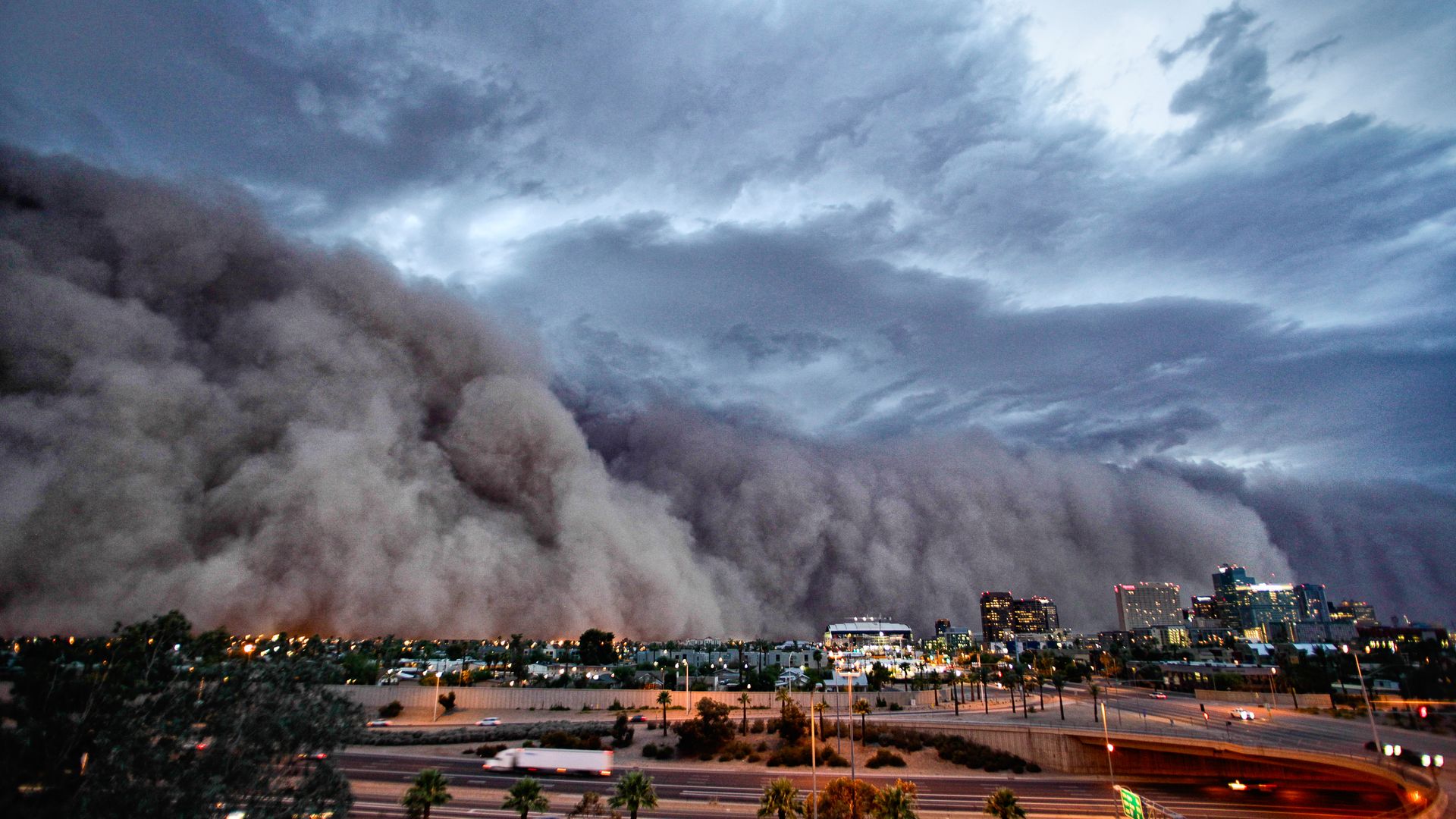3 hours ago -
A massive 2011 dust storm popularized the word "haboob" in Arizona

The dust storm that hit Phoenix on July 5, 2011, popularized the term "haboob." Photo: Mike Olbinski
Huge dust storms have long been a fact of life here in the Valley, and you've probably wondered why seemingly everyone started calling them "haboobs" one day.
Context: Haboob is an Arabic word that originated to describe the massive dust storms seen in Sudan and are common throughout the region.
Flashback: But a massive dust storm that slammed into the Valley on July 5, 2011, truly popularized the term here, Norman says.
Jeremy's thought bubble: As a Phoenix native, I quickly joined the "we've always just called them dust storms" camp when "haboob" came into common usage.
Context: Haboob is an Arabic word that originated to describe the massive dust storms seen in Sudan and are common throughout the region.
- The terms are often used interchangeably, but not all dust storms qualify as haboobs — it's the wall or cloud of dust you see that typically qualifies the event as a haboob.
- A 1972 article published by the American Meteorological Society stated that about 50% of dust storms in the Phoenix area qualify as haboobs.
Flashback: But a massive dust storm that slammed into the Valley on July 5, 2011, truly popularized the term here, Norman says.
- Photographer and storm chaser Mike Olbinski shot what quickly became famous photos and a viral time-lapse video of a giant wall of dust enveloping the Valley, posted online with the title: "Massive haboob hits Phoenix."
- The National Weather Service also used the term to describe the storm, says Randall Cerveny, a professor of geographical sciences at ASU's School of Geographical Sciences and Urban Planning.
- "Here we kind of just called them dust storms. But when I was staring at that one in Phoenix, it was the most insane, epic, post-apocalyptic wall of dust I'd ever seen here," Olbinski tells Axios Phoenix. "I was, like, if there's ever a haboob that happened in Arizona, this is it."
- Olbinski and Norman got the sense that one reason it caught on so quickly was people on TV simply liked saying "haboob."
- Olbinski says he heard a lot of pushback — not everyone liked the term.
- "I'm still not a big fan of the term," he says. "But I know what it means and you know what it means. So you know what? That's language, right?"
Jeremy's thought bubble: As a Phoenix native, I quickly joined the "we've always just called them dust storms" camp when "haboob" came into common usage.
- On the other hand, I never realized until recently that "monsoon" wasn't always a commonly used word here.
- I'm still going to keep saying "dust storm," but Norman's comments gave me some food for thought on the changing nature of language, and I'm at least a little more receptive to "haboob" now.

No comments:
Post a Comment